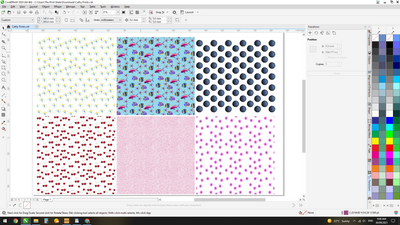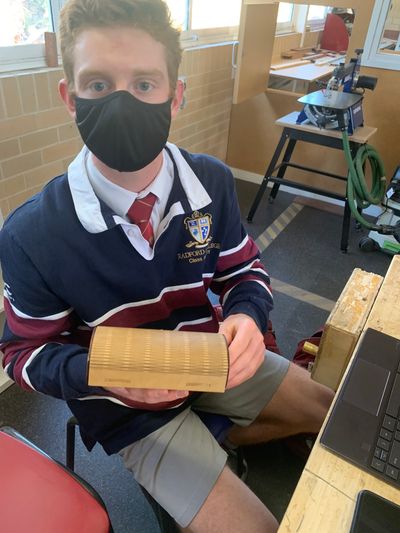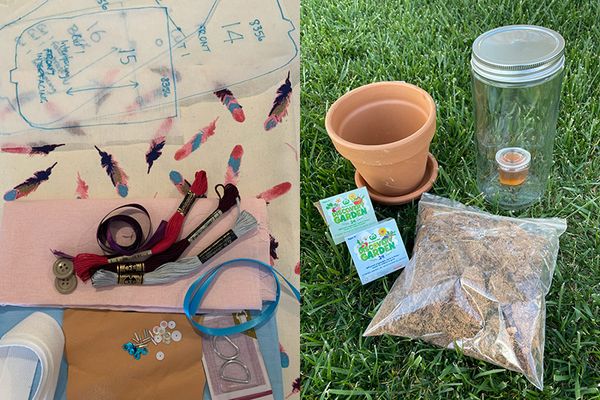Design and Technology Week
By Cathy Jackson, Head of Design Technology
Design and Technology Week is an annual event which promotes the educational value and learning outcomes that are attributed to the study of Design and Technology courses, as presented by ACARA in our national curriculum.
The Design and Technology (D&T) curriculum provides opportunities for students to develop their capability and confidence, combining their designing and making skills with knowledge and understanding to create quality products which solve a design challenge.
It is well known that the world needs creative problem solvers, and this is what the Design and Technology learning area delivers. Students learn to think creatively to develop a range of design ideas, using digital design tools, manufacturing products and systems, and build a range of applied technical skills to solve problems as individuals and as part of a team. However, at its core, Design and Technology education focuses on creativity and imagination. Students learn to design and make products that solve genuine, relevant problems within different contexts whilst considering their own and others’ needs, wants and values. D&T is a curriculum area that truly integrates classroom learning with industry expectations, digital technology, and design thinking skills.
The concept of STEM education has had an increased national and international focus as it represents many of the important 21st-century learning attributes students require for success in the future. In 2015, the Australian government agreed to the National STEM School Education Strategy 2016-2026, which focuses on the development of mathematical, scientific and technology concepts, as well as promoting problem solving, critical analysis and creative thinking skills within the school curriculum.
The development of critical and creative thinking skills, ICT skills, collaborative skills and ethical understandings are central to STEM education. It should be acknowledged that the knowledge and skills developed through the Technologies curriculum area (including digital, design and engineering) feature heavily in any STEM-based project, where students use design concepts, prototyping, innovative problem-solving processes, to create a solution to the design problem or challenge.

Typically, this week allows us to showcase the wonderful work students are creating as part of their course work in this highly innovative and practical learning area. In previous years, students have been involved in various activities and demonstrations which feature key aspects of the curriculum across the six subject areas which encompass the Design and Technology department at Radford College, namely food technology, textiles technology, graphics and design, digital technology, wood technology and engineering.
Given the current COVID-19 restrictions and continuing online learning environment, teachers have been required to re-evaluate how our traditional methods of teaching and learning can be reimagined to create new and interesting learning opportunities for students as they work from home. Teachers, themselves, have employed a problem-solving mindset to develop alternative learning opportunities for students to explore while working online, creating a solution to this real-world problem.

Many of our graphics and design students have continued to work on refining skills in design thinking and utilising digital design tools such as laser cutting and 3D printing to create their final products.
Wood technology students are very experienced at manipulating digital design software linked to the laser cutter and the CNC router to produce very intricate wood products.
Students in textiles technology have continued to refine their design skills by using digital printing techniques and exploring sustainable work practices by upcycling textiles products, while also using digital design tools such as 3D printing and laser cutter to take their design work to the next level.
Robotics and digital technology students are currently working on complex electronic projects where they are combining their skills in coding with design construction techniques to develop some amazing products.
Engineering students are developing aerodynamics and prosthetic prototypes to find a solution to their current design challenges, using recycled materials and digital tools.
ICT (information and communication technology) tools such as digital photography, website development and digital portfolios have been a feature in our food technology and hospitality classes, which have proven to be useful tools to capture practical activities and communicating trends in food selection and styling. Students are utilising their digital design skills to create innovative food presentation styles using the 3D food printer and 2D food scanner, which reflects industry standards.
From these examples, it is clear that Design and Technology is the inspiring, rigorous and practical subject area which prepares students to live and work in a complex and sustainable future. It is also apparent that students inherently enjoy working across these practical areas as it provides a creative outlet, and these skills can be applied to other settings or lead to a specific career path in the future.
References;
https://www.australiancurriculum.edu.au/f-10-curriculum/technologies/
https://research.acer.edu.au/research_conference/RC2016/9august/5/
